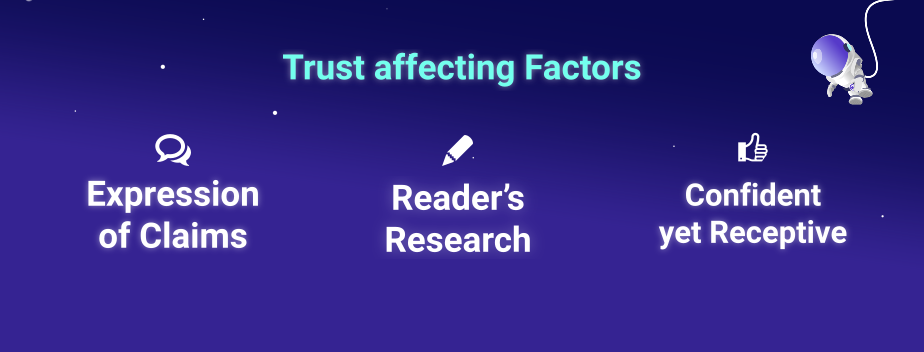Before exploring the implementation tactic of The Skeptic’s Journey, it’s important to consider its applicability. Simply put, this strategy is not for everyone or every industry. For example, gambling websites generally attract visitors due to advertisements rather than trust.
This strategy is designed for those with a skeptical audience. However, even within that demographic, the strategy may require adaption.
The Curious Case of DigitalOcean
DigitalOcean, arguably the most popular blog in the developer community, have built their reputation with information, simple, and approachable content, mostly in the form of tutorials and explainers, rarely covering their own offering.
As an alternative to major cloud providers like Microsoft Azure, Amazon Web Services, and Google Cloud Platform, DigitalOcean—often referred to as “the big three”—offers a simplified yet still powerful approach to cloud computing.
Their content aligns well with this goal, given how good tutorials focus on making a complex topic simple and approachable. In this way, manifesting expertise and proficiency are synonymous.
I believe this to be a great example of having authority drive content efforts. As a developer myself, I’ve gained a lot of value from DigitalOcean posts, yet I don’t remember ever being explicitly told anything like “our platform provides a simple approach to cloud computing”, or phrases often used in marketing.
Instead, they highlight their solution only when it’s relevant. In a tutorial mentioning a firewall setup, they only highlight their offering like this:
Note: If your servers are running on DigitalOcean, you can optionally use DigitalOcean Cloud Firewalls instead of the UFW firewall. We recommend using only one firewall at a time to avoid conflicting rules that may be difficult to debug.
There are two key takeaways from this example:
- The use of “optionally”
- It’s only presented as an option, not the right solution
- No mention of the benefits
- Although true, the text does nothing to highlight how their firewall is easier, simpler, approachable, etc.
This is a prime example of mindfully presenting information and highlighting your offering, relating specifically to their audience of developers, notoriously known for their dislike of being marketed to.
It also demonstrates another key principle understood by DigitalOcean; driving conversions through authority is a cohesive strategy. They’re confident in not just their content, but their offering.
The big three cloud platforms are great in their own way, offering a huge variety of services. But, even for experienced engineers, trying to set up a Linux server for the first time can easily take 15-30 minutes. Conversely, DigitalOcean allows even inexperienced engineers to do it in a few minutes.
This allows DigitalOcean to focus on simple and approachable tutorials, merely highlighting how they’re a cloud platform, creating the association between the two. Then, the next time an engineer experiences frustration with the complexity of “the big three”, it’s highly likely they’ll consider DigitalOcean as the “easy” option. And most importantly, they deliver.
Measuring the success by evaluating individual content pieces won’t provide useful insights, as your content may not even be the last touch-point before a reader converts. Authority-Led Content is about ensuring readers associate your brand with your core values, having readers think of your offering the next time they experience the challenges you’re solving.
Lastly, I want to emphasize that I’m in no way affiliated with DigitalOcean, I’ve simply been helped by their content many times over the years, and recognize the ingenuity of their content marketing. If anything, this section should serve as defining proof of just how effectively DigitalOcean has established authority.
Fostering Trust in The Skeptic’s Journey

Though I’ve touched on the importance of fostering trust, I believe it to be crucial enough to warrant its own section.
Guiding the Reader’s Research Approach
I’ve mentioned how all claims should withstand scrutiny, however it is possible to influence how that scrutiny unfolds. Often, research involves either validating or disproving information. A minor yet significant difference in how your readers approach their own research.
Research for validation often appears as “Their statement makes sense, but let me just double-check”.
Research for disproval often appears as “Hmm, this doesn’t make sense. Let me check for myself”.
One approach is inherently positive, while the other is inherently negative. You lose control of the reader’s journey once they start researching, so guiding them toward positively-minded research is crucial. Depending on the topic, the implications of their approach can be significant.
Some topics will have seen little discussion, but heavily-discussed topics are bound to have resources supporting every perspective—also those going against your offering.
“EV battery life problems and limitations” will provide significantly different results than “Benefits and longevity of EV batteries”.
How to Present Your Claims
Influencing a reader’s research approach is a result of the content as a whole, but is in large part determined by how you present your claims, which can generally be done in one of two ways:
- Providing resources and solid reasoning, with links to resources combined with carefully explaining how you’ve come to a given conclusion
- Providing no resources or reasoning, expecting your readers to agree, as your mind, it just makes sense
Most claims fall somewhere in between. However, the first approach can create a scenario where research doesn’t feel necessary; research is only done to validate. The second approach can lead to readers disregarding the claim entirely or doing research with a skeptical and negative mindset. Additionally, providing resources and reasoning aids in manifesting expertise and proficiency.
Being Confident, Yet Receptive
Acknowledging the possibility of being wrong is often key to fostering trust when combined with all the previously mentioned principles. Providing resources and reasoning can help readers understand where your conclusions stem from, likely being more understanding if they do end up being wrong. In most instances, they’ll disagree with your statement rather than disagree with you, a major factor in fostering trust.
The biggest challenge here is to be receptive without coming across as insecure. With a risk of exposing myself, these are some of the ways I’ve approached it throughout this post:
- “I firmly believe…”
- “The way I see it…”
- “It’s highly likely…”
While avoiding phrases like:
- “I might be wrong…”
- “This might not be right…”
I want to emphasize how I don’t view the phrasing above as “tricks for authority”. With any statement I make, I fully believe that I’m in the right. If I didn’t, I’d be wasting your time with uncertainties. However, I don’t anticipate anyone disagreeing, or if I do, I try to the best of my ability to address any disagreements.
That said, I fully acknowledge that these are opinions and interpretations based on my own knowledge and experience, and someone else may have more perspective than I have, and by extension have more insight.
Final Thoughts
Now ask yourself, what’s your reaction to this post? Does it read as someone being confident in their belief, or does it border on arrogance? Is your reaction negative or positive? If it’s negative, please reach out, I’d love to know how the phrasing can be improved. If it’s positive, then perhaps there is some sense to this approach.










